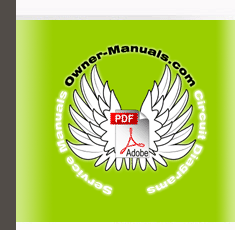|
|
|
Categories
|
|
Information
|
|
Featured Product
|
|
|
 |
|
|
There are currently no product reviews.
 ;
Actually, I was looking for this information for 3 years!...now thanks to you, the manual is on my hands and of great help, cause I understand now where I was doing wrong connections and wires...excellent, I'll be back to you if in need, thank you.
 ;
This manual covers the main equipment features only. While it also includes the procedure for saving and loading from the now long obsolete memory cards it does not mention the how to operate with the optional floppy drive interface so I am still at a loss about how to use this! Note that there is a separate manual covering the MIDI interface and programming via the keyboard, not included in this download. You will also need to get hold of this if you want to use the MIDI interface properly. Basically there is little difference between this manual and the free to download manual for the similar PR60 model.
 ;
Good list of manuals. I found a very rare one and easily get. Should be promptly to download, as we must to wait hours even after confirmed payment.
 ;
The manual was properly scanned and perfectly readable. The only small problem is that I couldn't use my dear Ctrl + F to find a word I needed.
 ;
Nothing wrong with the manual or the delivery - came to me the same day I ordered it. But afterwards I realized that I ordered the wrong manual. Probably better with the Quick start - version. So maybe it would be better if we could see a list with inhold for each manual before ordering?
,167$//$7,21 86,1* $ �
',$0(7(5 0(7$/ )/8( %2;
IMPORTANT: Restrictor plates must be removed. See Fig 15. When the metal flue box is to be built-in as a false chimney-breast using timber stud work with a plasterboard facing, the metal flue box should be enveloped with insulation material such as Rockwool or similar to prevent a build-up of heat within the structure. Either an air gap of 75mm should be maintained between any combustible materials and any part of the metal flue box or a minimum of 25mm of insulation material between the metal flue box and the combustible material. It is important that both the back panel and the appliance are sealed to the metal flue box to prevent any leakage of flue products or reduction in the flue draught. See Figs 4 & 5. 35(�&$67 )/8( ,167$//$7,216 IMPORTANT: Restrictor Plates must be removed. See Fig 15. See Figs 6 � 8. &+(&.,1* &21',7,21 $1' &203$7,%,/,7< 2) 7+( &+,01(< Check that the chimney conforms to the required specifications as previously stated. Examine the condition and carry out any remedial work as necessary, if the flue has been used for solid fuel it should be swept and a smoke test carried out to check that satisfactory smoke clearance has been established. If all the smoke is not drawn into the flue, pre-heat the flue with a blowtorch or similar and re-check. If there is any uncertainty examine for the cause and if necessary seek expert advice. *$6 6833/< BEFORE COMMENCING WORK, TURN OFF ANY APPLIANCES THAT ARE FED BY THE METER AND ISOLATE THE GAS SUPPLY BY TURNING OFF AT THE METER The gas connection to this appliance is made with 8mm o/d rigid or semi rigid tube to a pressure test elbow situated on the L/H side of the burner as shown below. It is advisable to provide a means of isolating the gas supply to the appliance for servicing with either a restrictor elbow or isolation cock such as shown below. Provision is made in the rear L Hand corner of the outer casing to allow a gas supply to be fed to the burner assembly. A blanking plate and gasket is supplied with cutouts and slots that will enable a seal to be made around the supply pipe. If a restrictor elbow is to be used, it will be necessary to cut and form the bundy pipe supplied. Any pipe used under the burner must be in rigid tube such as Bundy, 3 pieces of Bundy are included in the fitting kit to assist the installer. (a) A short piece for use with a restrictor elbow. (b) A formed section for connection to an isolation cock, and (c) a formed section for R Hand supply using the inline connector supplied. The inlet pipe support bracket can be removed if necessary to gain greater access, by unscrewing the Control mounting lock nut and lifting over the spindle, as shown in Fig 9. Where a concealed gas supply is used, the installer is reminded of the requirements of BS 6891 1988 dealing with enclosed pipes. The Standard requires that when a gas pipe is fed through a wall, the pipe should be enclosed in a tight sleeve to protect against failure caused by movement and shall be constructed to prevent passage of gas either between the pipe and sleeve or sleeve and wall. Permanent sealant e.g. fire cement etc. should not be used as these would prevent removal of the firebox if so required.
Page 6
|
|
 |
> |
|
